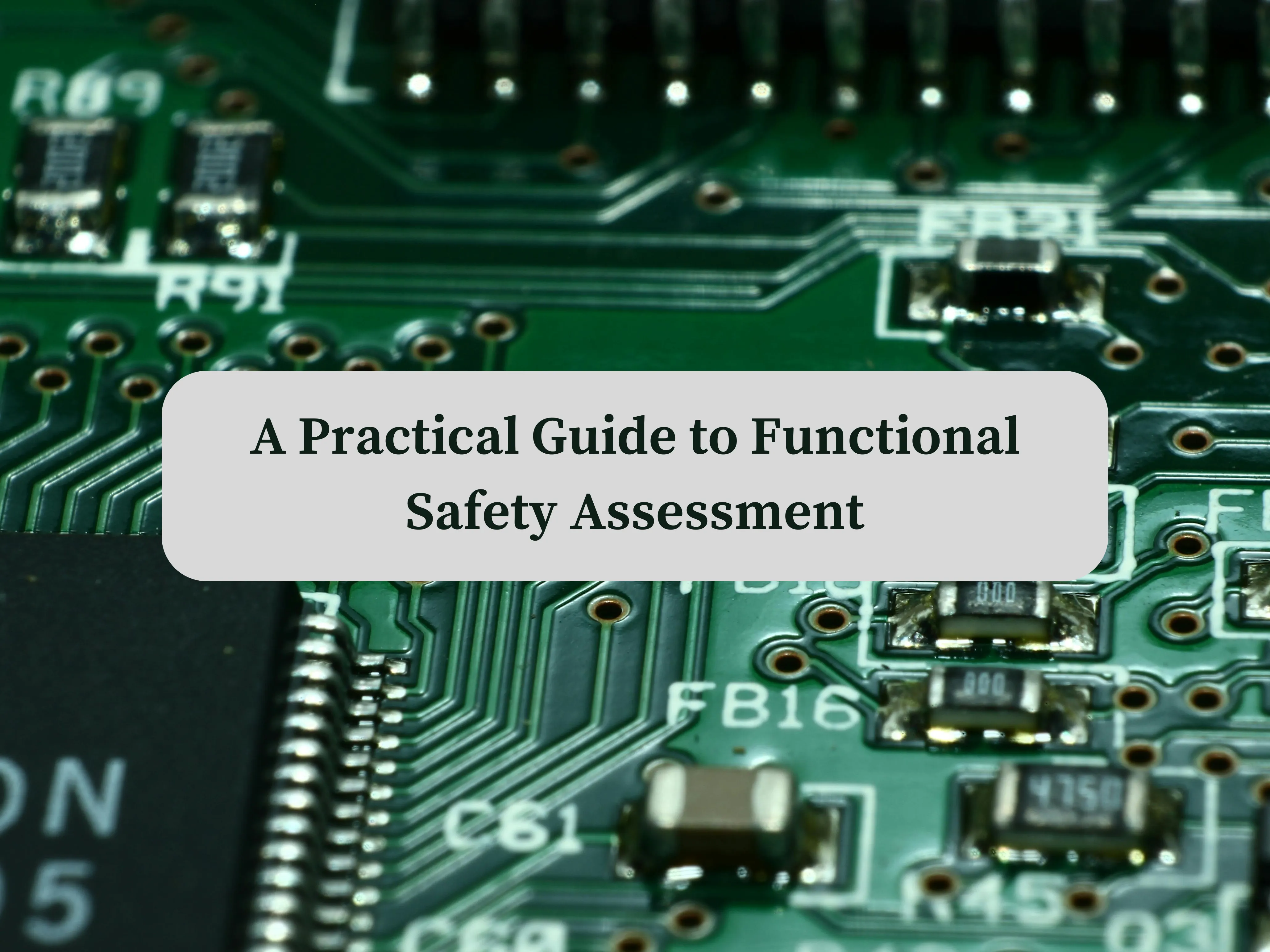Introduction Functional Safety Assessments (FSA) are essential for ensuring that safety-related systems remain reliable—even when faults occur. This guide explores the FSA process, offering key insights and actionable tips for safety managers and professionals, particularly in the context of the ISO 26262 standard.
1. Why FSA Matters
An FSA is more than just a compliance checkpoint—it’s a deep dive into the integrity of safety-related systems. By identifying and addressing systematic issues, FSAs ensure that safety functions operate as intended throughout the system’s lifecycle. The process provides an independent, cross-functional evaluation, reinforcing confidence in system safety.
2. Choosing the Right Assessment Body
Selecting a credible assessment body is a crucial step. Here’s what to look for:
Certification & Accreditation: Ensure the body is accredited by recognized organizations (e.g., TÜV SÜD, ABB).
Expertise & Experience: Seek assessors with a strong track record in your industry and relevant projects.
Independence: An unbiased evaluation requires an independent assessment body.
Reputation & References: Review case studies, client feedback, and references to gauge reliability.
3. The Role of Preliminary Findings Reports
Early identification of issues prevents costly delays and rework. A well-structured preliminary report should include:
Scope & Boundaries: Define what the assessment covers.
Initial Observations: Highlight immediate concerns or potential risks.
Recommendations: Offer actionable solutions to address identified issues.
Evidence & Documentation: Provide supporting data for findings and conclusions.
4. Final Submittals: Wrapping Up the FSA Process
The completion of an FSA involves several key deliverables:
Final Report: A detailed summary of the assessment, findings, and recommendations.
Action Items: A clear list of steps to resolve outstanding issues.
Certification: Formal documentation verifying compliance with functional safety standards.
Follow-up Plan: A roadmap for continued compliance and future audits.
Functional Safety Assessment in Robotics
FSA plays a crucial role in robotics, but the approach varies based on the application and risk level. Industrial robots, especially those involved in human-robot collaboration, follow rigorous safety standards like ISO 26262. These assessments involve extensive hazard analysis, risk evaluation, and validation processes to ensure the highest level of safety and reliability.
On the other hand, consumer and service robots often have more flexible assessment processes due to lower risks, evolving regulations, or the innovative nature of the technology. This variability underscores the need for a tailored FSA approach that aligns with the specific risks and requirements of each robotic application.
For instance, the safety assessment for a factory robot differs significantly from that of a home assistant robot. Choosing an assessment body with the right expertise, ensuring independent evaluation, and adhering to the most relevant safety standards are critical for developing safe and reliable robotic systems. By taking these steps, organizations can mitigate risks, enhance system quality, and maintain compliance with applicable safety regulations.
Conclusion
Functional Safety Assessments are indispensable for maintaining the integrity and dependability of safety-critical systems. By following a structured approach and selecting the right assessment body, organizations can confidently ensure their systems meet the highest safety standards.
